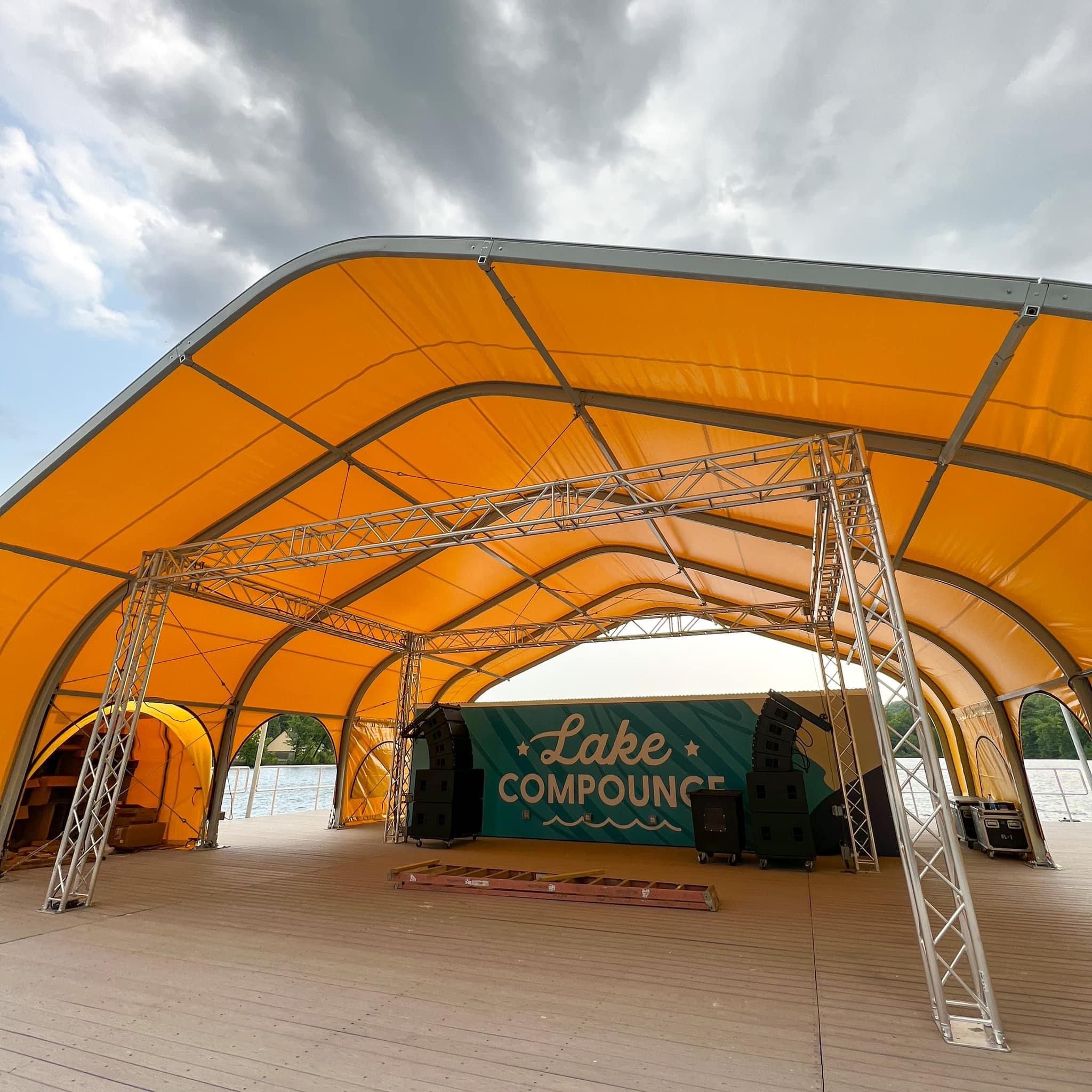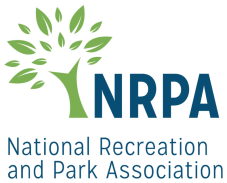A floating stage in public parks and recreation centers can offer several benefits. Here are some of them
Versatility and Flexibility: A floating stage provides a versatile and flexible space for hosting various events and performances. It can be easily moved and adjusted to accommodate different types of activities such as concerts, theatrical performances, dance recitals, or community gatherings. This flexibility allows parks and recreation centers to cater to a wide range of events and attract diverse audiences.
Increased Capacity: By adding a floating stage, parks and recreation centers can expand their capacity to hold larger events. The stage provides a focal point that can be viewed from different angles, allowing for better visibility, and accommodating more spectators. This enables the venue to host bigger concerts, festivals, or cultural events, fostering a sense of community engagement and social interaction.
Scenic Setting: Floating stages often offer breathtaking views and unique experiences due to their placement on bodies of water. They create an aesthetically pleasing backdrop and can enhance the overall ambiance of an event. The scenic setting can attract more visitors and provide an enjoyable atmosphere for both performers and the audience.
Integration with Nature: Parks and recreation centers are usually surrounded by natural beauty. A floating stage fits seamlessly into the environment, allowing events to take place while maintaining a strong connection with nature. It offers an opportunity to showcase local landscapes, waterfronts, and ecosystems, thus promoting environmental appreciation and conservation.
Accessible and Inclusive: Floating stages can be designed to provide accessibility for people with disabilities, ensuring equal participation and enjoyment for all individuals. Features such as ramps, handrails, and designated seating areas can be incorporated to facilitate easy access and enhance inclusivity. This makes events on floating stages more welcoming to diverse audiences, including those with mobility challenges.
Noise and Environmental Considerations: Floating stages can help mitigate noise pollution that may occur during large events. By placing the stage on the water, sound is dispersed more effectively, reducing the impact on nearby residential areas. Additionally, the use of eco-friendly materials and practices during the construction and operation of the stage can minimize environmental harm.
Economic Opportunities: Hosting events on a floating stage can generate economic benefits for the surrounding area. It attracts visitors, stimulates local businesses, and boosts tourism. Nearby restaurants, shops, and accommodations may experience increased patronage, contributing to the economic growth of the community.
Community Engagement: Floating stages encourage community participation and engagement. They provide a platform for local artists, musicians, and performers to showcase their talent, fostering a sense of pride and cultural identity. Community members can actively participate in organizing and attending events, strengthening social connections, and building a vibrant and active community.
Overall, a floating stage in public parks and recreation centers offers a range of benefits, including increasedversatility, capacity, scenic beauty, accessibility, and economic opportunities. It serves as a catalyst for community engagement and contributes to the overall well-being and cultural vibrancy of the area.
Additional social and economic benefits for the park
Social Benefits
Community Cohesion: The presence of a floating stage encourages community members to come together and participate in shared experiences. It promotes a sense of belonging and community cohesion by providing a space for people to connect, socialize, and interact with one another.
Cultural Exchange: Floating stages can be utilized to host cultural events, music festivals, or performances that celebrate the diversity of the community. This fosters cultural exchange, appreciation, and understanding among different groups, promoting a more inclusive and harmonious society.
Educational Opportunities: Floating stages can serve as educational platforms where workshops, seminars, and educational programs can be conducted. These events can promote learning, artistic development, and skills enhancement, offering valuable opportunities for personal growth and development within the community.
Recreation and Leisure: Parks with floating stages become vibrant hubs of recreational activities. They provide a space for people to relax, enjoy outdoor performances, and engage in leisure activities such as picnics, jogging, or simply taking in the natural surroundings. This contributes to improved physical and mental wellbeing of individuals.
Economic Benefits
Tourism Boost: A floating stage can be a significant attraction for tourists and visitors. Hosting events and performances on the stage can draw people from outside the community, boosting tourism and bringing in additional revenue for local businesses, including restaurants, hotels, and shops.
Job Creation: The operation and maintenance of a floating stage require a workforce, which leads to job creation within the community. Event organizers, technicians, security personnel, and other support staff are needed to ensure the smooth running of events. This generates employment opportunities and contributes to the local economy.
Increased Revenue: The events and activities organized on a floating stage can generate revenue through ticketsales, sponsorship, concessions, and merchandise sales. This revenue can be reinvested in the park’s maintenance, infrastructure development, or other community initiatives, further benefiting the local economy.
Business Opportunities: The presence of a floating stage can attract entrepreneurs and investors to set up businesses in the vicinity of the park. Restaurants, cafes, souvenir shops, or equipment rental services can capitalize on the increased footfall and demand generated by the events, contributing to the growth of the local economy.
Property Value Appreciation: Parks with well-utilized and vibrant amenities, such as floating stages, can have a positive impact on nearby property values. The enhanced recreational opportunities and quality of life associated with the park can make the surrounding areas more desirable, leading to increased property values and potential economic gains for property owners.
By offering social and economic advantages, a floating stage in a park can create a dynamic and thriving community while attracting visitors and contributing to the overall prosperity of the area.
Additional detail on the Cultural benefit at the park
Cultural benefits associated with a floating stage in a park are diverse and significant. Here are some additional details on the cultural benefits
Cultural Expression and Preservation: A floating stage provides a platform for local artists, musicians, dancers, and performers to showcase their talent and express their creativity. It encourages cultural expression and serves to preserve and promote traditional and contemporary art forms within the community.
Exposure to Diverse Cultures: Floating stages can host multicultural events, performances, and festivals that expose community members to different cultures, traditions, and artistic styles. This exposure enhances cultural diversity appreciation, fosters intercultural dialogue, and promotes a sense of unity and respect among community members.
Community Arts Programs: The presence of a floating stage in a park can inspire the development of community arts programs. Workshops, classes, and rehearsals for various art forms, such as music, dance, theater, or visual arts, can be organized, encouraging community members of all ages to actively engage in artistic pursuits and creative endeavors.
Youth Engagement and Empowerment: Floating stages provide opportunities for young people to participate in cultural events and performances. They can showcase their talents, gain confidence, and develop essential life skills such as teamwork, discipline, and creativity. This engagement with the arts promotes youth empowerment and provides a positive outlet for self-expression and personal growth.
Cultural Tourism and Identity: A vibrant cultural scene, supported by a floating stage, can attract cultural tourism. Visitors from outside the community are drawn to experience the local arts and cultural events, contributing to the economy, and fostering a sense of pride and identity among community members. Cultural activities and festivals can help define the community’s unique character and strengthen its cultural heritage.
Intergenerational Bonds: Cultural events on a floating stage often bring together people of different age groups and backgrounds. This creates opportunities for intergenerational connections and knowledge exchange. Elderly community members can share their traditional arts and cultural practices with younger generations, ensuring the preservation and continuity of cultural heritage.
Community Collaboration: Cultural events on a floating stage often require collaboration among artists, performers, event organizers, volunteers, and community members. This collaboration fosters a sense of community spirit, shared responsibility, and mutual support. Working together towards a cultural event strengthens social bonds, cultivates a sense of belonging, and enhances community pride.
Cultural Tourism and Economic Impact: A vibrant cultural scene supported by a floating stage can attract visitors from outside the community, contributing to cultural tourism. Cultural tourists often spend money on accommodations, dining, and shopping, which benefits local businesses and stimulates economic growth. By providing a space for cultural expression, fostering intercultural understanding, and engaging the community in artistic pursuits, a floating stage in a park plays a vital role in enhancing the cultural fabric of the community, promoting cultural tourism, and fostering a sense of unity and pride among community members.
In conclusion, The addition of a floating stage in public parks and recreation centers offers numerous benefits, both social and economic. The versatility and flexibility of a floating stage allow for a wide range of events and performances, attracting diverse audiences and fostering community engagement. The scenic setting and integration with nature create a unique ambiance, while accessibility features ensure inclusivity for all individuals. The floating stage helps mitigate noise pollution and promotes environmental consideration. Economically, it boosts tourism, generates revenue, creates job opportunities, and stimulates local businesses. Furthermore, the cultural benefits are significant, as the stage provides a platform for cultural expression, exposure to diverse cultures, community arts programs, and youth empowerment. It strengthens intergenerational bonds, fosters collaboration, and contributes to the community’s cultural tourism and identity. Overall, a floating stage enriches the social fabric, enhances the quality of life, and drives economic prosperity in the community, making it a valuable addition to public parks and recreation centers.







